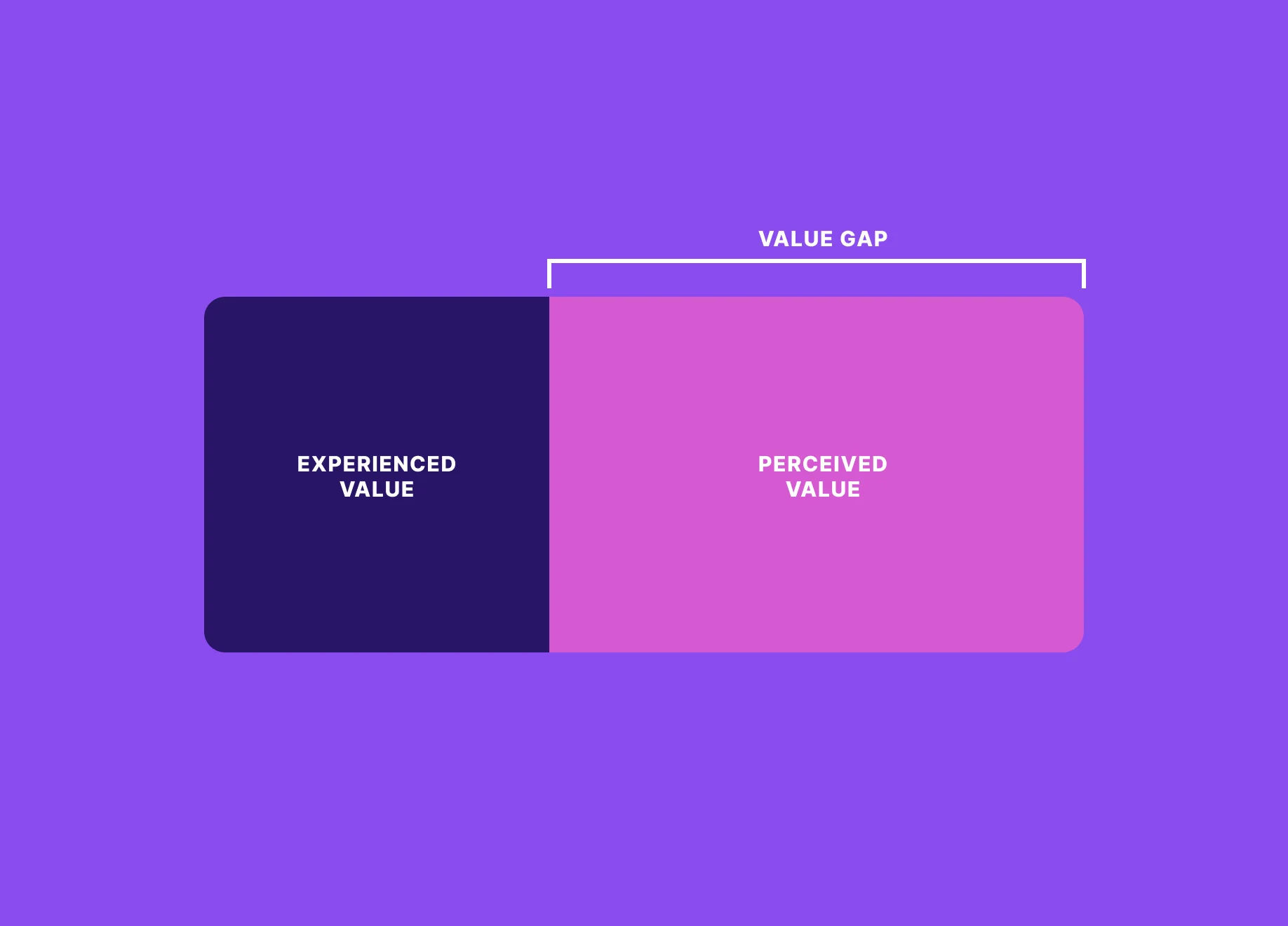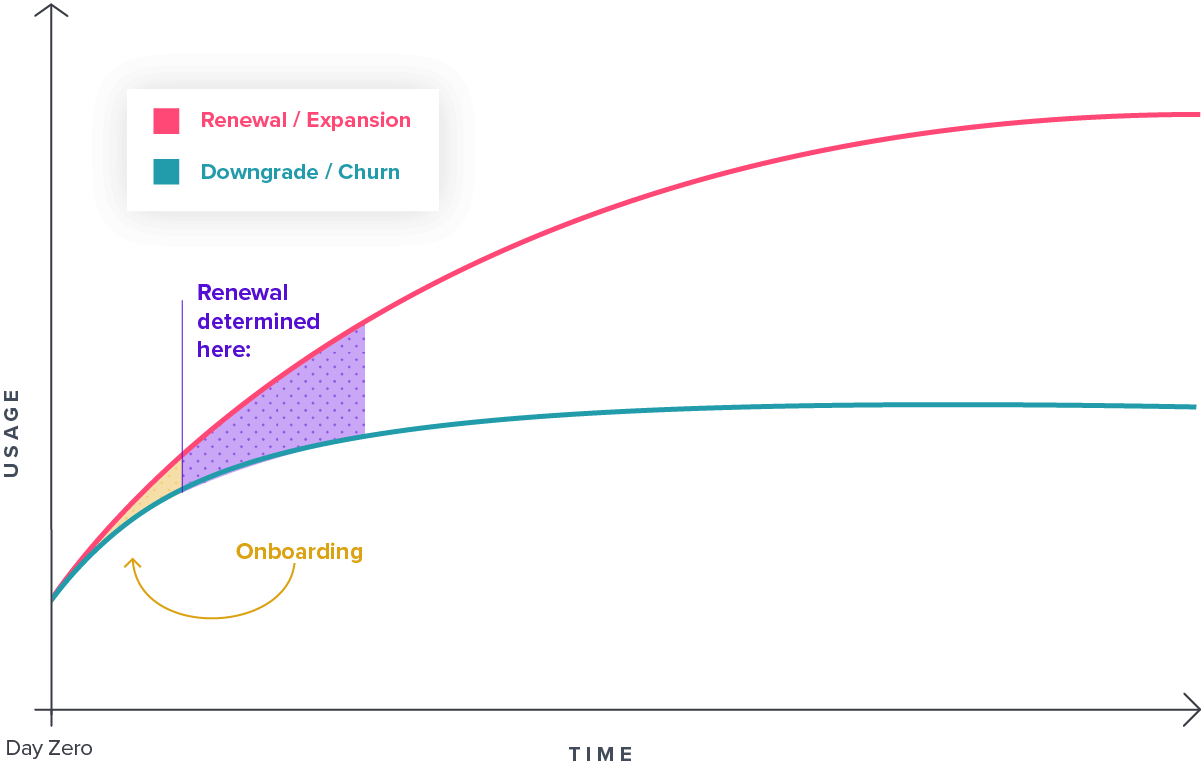Inhaltsverzeichnis
Was ist eine Wertlücke?
The value gap occurs when the perceived value and experienced value for a software product don’t overlap, creating a “gap” between the user’s expectations and reality. In Pendo’s product benchmarks report, researchers found that only 30% of users exhibit regular usage in the first 90 days of using a new product, which suggests that most users are not experiencing the value they anticipated at purchase. Often the problem isn’t that new users are incapable or the product is insufficient, but rather that there is an educational barrier preventing customers from discovering value in the app.
Warum spielt die Wertlücke eine Rolle?
If new users can’t easily find value in a product, they are likely to abandon using it altogether, especially since the rise of SaaS applications has made switching costs extremely low. Companies need to remember that customer churn doesn’t happen when the contract ends—it happens when users no longer find your product useful or valuable.
Wie kann ich die Wertlücke meines Produkts minimieren?
In order to close (or prevent) the value gap, companies need to implement an effective onboarding experience so that new users learn and find value in the product as quickly as possible. Although there are many ways to administer onboarding, many companies are turning to an in-app approach. With in-app onboarding, companies are able to provide contextual information to new users as they navigate the product, and help them utilize the functionality that’s most relevant to them.
Citrix, for example, used product analytics to identify a certain trial usage pattern that converted to paying customers at a higher rate than others. The team then created an in-app onboarding flow that steered trial users toward those particular features, and was able to increase their trial conversion rate by 28 percent.
Here are some best practices for building an effective in-app onboarding strategy:
- Halten Sie es einfach: Versuchen Sie, Ihren Onboarding-Prozess so einfach wie möglich zu gestalten. Das Letzte, was Sie wollen, ist, dass die Benutzer bereits bei der ersten Anmeldung das Gefühl haben, sie könnten Ihr Produkt nicht richtig bedienen.
- Planen für verschiedene Lernstile: Da jeder Mensch anders lernt, sollten Sie mehrere Formate (Videos, illustrierte Komplettlösungen usw.) und Möglichkeiten für die Benutzer, beim Onboarding voranzukommen, in Betracht ziehen (z. B. damit sie die Themen in ihrer bevorzugten Reihenfolge erkunden können).
- Personalisieren Sie, wann immer es möglich ist: Ihr Produkt richtet sich wahrscheinlich an verschiedene Arten von Nutzern. Daher ist es wichtig, das In-App-Onboarding auf verschiedene Benutzersegmente und deren spezifische Bedürfnisse und Arbeitsabläufe zuzuschneiden, die für den Erfolg erforderlich sind.
- Bestimmen Sie die Verantwortlichkeit: Stellen Sie sicher, dass Sie beim Onboarding klare Verantwortlichkeiten festlegen (entweder eine spezielle Onboarding-Rolle oder ein Mitglied der Produkt- oder Kundenerfolgsabteilung), und beziehen Sie die richtigen Stakeholder in die Planung und Ausführung ein.
Dies könnte Sie auch interessieren

The truth about the software experience gap—and why you need to close it

Produktmanagement 101: Die Wertlücke




